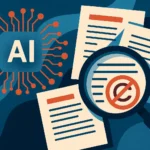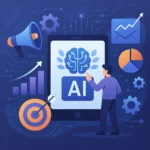Now Reading: What Is Content Marketing and Why It’s the Secret to Digital Marketing Success?
-
01
What Is Content Marketing and Why It’s the Secret to Digital Marketing Success?
What Is Content Marketing and Why It’s the Secret to Digital Marketing Success?

Content marketing has revolutionized how businesses connect with their audiences in the digital landscape. Rather than interrupting consumers with traditional advertising, content marketing focuses on creating and distributing valuable, relevant content that attracts and engages a clearly defined audience. This strategic approach has become the backbone of successful digital marketing strategies worldwide, helping brands build trust, establish authority, and drive profitable customer action.
Key Takeaways
- Content marketing is a strategic approach focused on creating and distributing valuable, relevant content to attract and retain a clearly defined audience and drive profitable customer actions.
- It’s crucial for digital marketing because it builds brand awareness, improves SEO, generates leads, establishes authority, and delivers higher ROI than traditional marketing methods.
- Unlike traditional advertising that interrupts consumers, content marketing provides value first, building trust and relationships that lead to long-term customer loyalty.
- Effective content marketing supports all stages of the buyer’s journey, from awareness to consideration to decision.
- When combined with SEO, content marketing creates a powerful strategy that increases visibility, drives organic traffic, and improves conversion rates.
What Is Content Marketing?
Content marketing is a strategic marketing approach centered on creating, publishing, and distributing valuable, relevant, and consistent content to attract and retain a clearly defined audience. Unlike traditional advertising methods that directly pitch products or services, content marketing focuses on providing useful information that helps your prospects and customers solve their problems.
At its core, content marketing is about storytelling and information sharing that builds trust and relationships with your audience. By consistently delivering content that your audience finds valuable, you position your brand as a credible resource and thought leader in your industry.
Useful Articles:
Types of Content Marketing
Content marketing encompasses various formats designed to engage different audience segments across multiple platforms:
Blog posts and articles: These form the foundation of many content marketing strategies, providing in-depth information on topics relevant to your audience.
Videos: From tutorials and product demonstrations to interviews and brand stories, video content engages viewers and can explain complex concepts effectively.
Infographics: These visual representations of information or data make complex information easy to understand at a glance.
Podcasts: Audio content allows your audience to consume your content while multitasking, making it increasingly popular.
Ebooks and whitepapers: These longer-form content pieces establish your expertise and provide comprehensive information on specific topics.
Social media content: Platforms like Instagram, LinkedIn, Twitter, and Facebook require tailored content that encourages engagement and sharing.
Case studies: These real-world examples demonstrate how your products or services have helped customers solve problems.
Webinars and online courses: Educational content that provides significant value while positioning your brand as an authority.
Content Marketing vs. Digital Marketing
While content marketing and digital marketing are closely related, they’re not the same thing. Understanding the difference helps clarify how they work together:
| Aspect | Content Marketing | Digital Marketing |
|---|---|---|
| Definition | Focuses on creating and distributing valuable content | Encompasses all online marketing strategies and channels |
| Primary Goal | Build brand awareness and nurture customer relationships | Drive conversions and achieve business goals |
| Focus | Involves blogs, videos, and other content types | Includes SEO, PPC, email marketing, and more |
| Scope | A subset of digital marketing, focusing solely on content | A broader strategy that covers multiple digital channels |
| Customer Engagement | Provides value through educational or entertaining content | Utilizes various channels for immediate interaction and sales |
| Time Frame | Long-term strategy for building relationships | Can be short or long-term, often focusing on immediate results |
| Measurement | Measures engagement, traffic, and brand sentiment | Measures conversions, ROI, and sales |
Content marketing serves as a critical component of a comprehensive digital marketing strategy. While digital marketing encompasses all online marketing efforts, content marketing specifically focuses on creating and sharing valuable content to attract and engage your target audience.
Useful Articles:
Why Is Content Marketing Important For Digital Marketing?
Content marketing has become the cornerstone of successful digital marketing strategies for several compelling reasons. Understanding these benefits helps explain why businesses across industries are investing heavily in content creation and distribution.
Builds Brand Awareness and Authority
In today’s crowded digital landscape, visibility is essential for business success. Content marketing serves as a powerful tool to increase brand awareness by allowing your business to appear where your target audience is already searching for information, entertainment, or solutions.
By consistently publishing high-quality content that addresses your audience’s needs and interests, you establish your brand as a thought leader in your industry. This perceived expertise builds trust and credibility, positioning your brand as the go-to resource when customers are ready to make purchasing decisions.
How it works in practice:
- Your educational blog posts get shared across social media, expanding your reach
- Your insightful industry reports get cited by other websites, building backlinks
- Your helpful how-to videos get discovered through search, introducing new audiences to your brand
Over time, this consistent presence and value delivery creates strong brand recognition and authority that traditional advertising alone cannot achieve.
Improves SEO and Website Performance
Content marketing and Search Engine Optimization (SEO) form a powerful partnership that drives organic traffic to your website. High-quality, keyword-optimized content increases your chances of ranking higher in search engine results pages (SERPs), making it easier for potential customers to find you.
Each piece of content you create provides an additional opportunity to rank for relevant keywords. Blog posts, in particular, help improve your website’s SEO by:
- Adding fresh, relevant content that search engines favor
- Creating opportunities for internal linking, which improves site architecture
- Increasing dwell time as visitors engage with your content
- Generating backlinks when others reference your valuable content
Studies show that businesses that maintain active blogs receive 97% more links to their websites, significantly impacting their search rankings and visibility.
Generates and Nurtures Leads
Content marketing attracts potential customers at every stage of the buyer’s journey—from awareness to consideration to decision. By creating content tailored to each stage, you can guide prospects through your sales funnel and nurture them until they’re ready to buy.
In the awareness stage, educational content helps prospects identify their problems. During consideration, comparative content helps them evaluate potential solutions. In the decision stage, product-specific content showcases why your offering is the best choice.
This strategic approach to content creation ensures you’re providing value at every touchpoint, building relationships with prospects long before they become customers. Research shows that content marketing generates three times more leads per dollar spent compared to traditional marketing methods.
Drives Engagement and Builds Relationships
Content marketing encourages interaction with your brand through comments, shares, likes, and direct responses. This engagement creates opportunities for meaningful conversations with your audience, helping you build lasting relationships based on trust and mutual value.
By consistently providing content that resonates with your audience, you foster loyalty and increase the likelihood of repeat business. Engaged customers become brand advocates who share your content with their networks, extending your reach organically.
The relationship-building aspect of content marketing is particularly valuable in today’s market, where consumers increasingly make purchasing decisions based on trust and emotional connections with brands.
Cost-Effective and Sustainable
Compared to traditional advertising, content marketing is more cost-effective and provides long-term value. While creating high-quality content requires an initial investment, that content continues to attract and inform audiences over time, delivering ongoing returns.
Unlike paid advertising that stops generating results when you stop paying, content marketing assets continue working for your business long after publication. A well-researched blog post or video can drive traffic and generate leads for years, especially when regularly updated to maintain relevance.
Studies indicate that content marketing costs 62% less than traditional marketing while generating approximately three times as many leads, making it an exceptionally efficient marketing strategy.
Supports the Entire Digital Marketing Ecosystem
Content is the backbone of all digital marketing efforts. Without quality content, your social media, email campaigns, paid advertising, and even your website would lack substance and effectiveness.
Content marketing provides the fuel that powers your entire digital marketing strategy:
- Social media needs engaging content to share and drive engagement
- Email marketing requires valuable content to encourage opens and clicks
- Paid advertising performs better when directing users to high-quality content
- SEO relies on content to rank for relevant keywords
By investing in content marketing, you’re strengthening all aspects of your digital marketing efforts, creating a cohesive strategy that maximizes results across channels.
Adapts to Modern Consumer Preferences
Today’s consumers prefer to research and engage with brands on their own terms. They actively avoid interruptive advertising while seeking out helpful information that addresses their needs and interests.
Content marketing aligns perfectly with this shift in consumer behavior by offering valuable resources rather than interruptive ads. It respects the consumer’s journey and provides assistance along the way, creating positive brand associations that influence purchasing decisions.
According to research, 69% of marketers say content marketing is superior to direct mail and PR, reflecting its effectiveness in connecting with modern consumers.
The Relationship Between SEO and Content Marketing
SEO and content marketing are distinct but deeply interconnected strategies that work best when implemented together. Understanding how they complement each other helps maximize the effectiveness of both approaches.
How SEO and Content Marketing Work Together
SEO and content marketing form a symbiotic relationship where each enhances the other’s effectiveness:
- Content fuels SEO: Search engines need content to index and rank. Without quality content, even the most technically optimized website will struggle to rank well.
- SEO makes content discoverable: Even the most valuable content won’t deliver results if people can’t find it. SEO ensures your content reaches your target audience through search.
- Keywords inform content creation: SEO research reveals what your audience is searching for, helping you create content that addresses their specific needs and interests.
- Content builds authority: High-quality content that earns backlinks and engagement signals to search engines that your site is authoritative and trustworthy.
- SEO provides structure: SEO best practices guide how content should be organized, formatted, and linked, improving user experience and search visibility.
When implemented together, SEO and content marketing create a powerful strategy that increases visibility, drives organic traffic, and improves conversion rates.
Boosting Search Visibility Through Content
Creating valuable content is at the heart of content marketing, and SEO ensures this content gets seen. By optimizing your content with relevant keywords, meta descriptions, and internal links, you increase your chances of ranking higher in search results, making it easier for potential customers to find you.
Each blog post, article, or video you create provides an additional opportunity to rank for relevant keywords and phrases. This expanded search presence increases your brand’s visibility and drives more organic traffic to your website.
Driving Organic Traffic
Well-optimized content attracts more organic traffic from search engines. By integrating SEO techniques like keyword optimization into your content marketing, you draw in more visitors who are actively searching for information related to your industry, products, or services.
This targeted traffic is particularly valuable because it consists of users who have already expressed interest in topics related to your business. They’re more likely to engage with your content, explore your website, and eventually convert into customers.
Useful Articles:
Creating an Effective Content Marketing Strategy
Developing a successful content marketing strategy requires careful planning, execution, and ongoing optimization. Here’s how to create a strategy that delivers results:
Setting Clear Goals and Objectives
Before creating content, define what you want to achieve with your content marketing efforts. Common goals include:
- Increasing brand awareness
- Generating leads
- Improving customer engagement
- Establishing thought leadership
- Driving sales and conversions
Your goals should be specific, measurable, achievable, relevant, and time-bound (SMART). For example, rather than simply aiming to “increase traffic,” set a goal to “increase organic traffic by 25% within six months.”
Clear objectives guide your content creation efforts and provide benchmarks for measuring success.
Understanding Your Target Audience
Effective content marketing starts with a deep understanding of your audience. Create detailed buyer personas that include:
- Demographic information
- Pain points and challenges
- Goals and motivations
- Preferred content formats and channels
- Typical questions and concerns
This information helps you create content that resonates with your audience and addresses their specific needs at each stage of the buyer’s journey.
Developing a Content Calendar
A content calendar organizes your content creation and publication schedule, ensuring consistency and strategic alignment. Your calendar should include:
- Content topics and themes
- Publication dates
- Content formats
- Target keywords
- Distribution channels
- Team responsibilities
A well-planned content calendar prevents last-minute scrambling and ensures your content aligns with business goals, seasonal trends, and marketing campaigns.
Creating High-Quality, SEO-Optimized Content
Quality content forms the foundation of successful content marketing. Focus on creating content that is:
- Valuable: Provides useful information, solves problems, or entertains your audience
- Relevant: Addresses topics your audience cares about
- Original: Offers unique insights or perspectives
- Well-researched: Includes accurate information and credible sources
- Engaging: Written in a compelling, conversational style
- Optimized for SEO: Incorporates relevant keywords naturally
Remember that quality always trumps quantity. It’s better to publish fewer pieces of exceptional content than to flood your channels with mediocre material.
Distributing and Promoting Your Content
Creating great content is only half the battle—you also need to ensure it reaches your target audience. Develop a distribution strategy that leverages multiple channels:
- Social media platforms
- Email newsletters
- Industry forums and communities
- Content syndication
- Paid promotion
- Influencer partnerships
Tailor your distribution approach to each piece of content and the specific audience segments you want to reach.
Measuring and Analyzing Results
Regular measurement and analysis help you understand what’s working and what needs improvement. Track key metrics such as:
- Website traffic and sources
- Engagement metrics (time on page, bounce rate)
- Social shares and comments
- Lead generation and conversions
- SEO rankings for target keywords
Use these insights to refine your strategy, optimize underperforming content, and double down on successful approaches.
Types of Content for Effective Content Marketing
Different content formats serve different purposes and appeal to different audience preferences. A diverse content mix helps you engage your audience across multiple touchpoints and address various stages of the buyer’s journey.
Blog Posts and Articles
Blog posts form the cornerstone of many content marketing strategies. They’re versatile, SEO-friendly, and effective for educating your audience and establishing authority. Effective blog content includes:
- How-to guides and tutorials
- Industry insights and trend analysis
- Problem-solving articles
- Listicles and roundups
- Case studies and success stories
Regularly updated blogs improve your website’s SEO, drive organic traffic, and establish your brand as an industry expert.
Videos and Podcasts
Visual and audio content formats are increasingly popular as they offer engaging alternatives to written content. Videos are particularly effective for:
- Product demonstrations
- Tutorials and how-to guides
- Expert interviews
- Behind-the-scenes glimpses
- Customer testimonials
Podcasts allow your audience to consume your content while multitasking, making them ideal for in-depth discussions, interviews, and storytelling.
Infographics and Visual Content
Visual content simplifies complex information and captures attention in crowded digital spaces. Infographics are particularly effective for:
- Presenting statistics and data
- Explaining processes and workflows
- Comparing options or approaches
- Summarizing research findings
- Illustrating timelines and histories
Well-designed visual content is highly shareable, extending your reach across social platforms and generating backlinks.
Ebooks, Whitepapers, and Long-Form Content
Comprehensive, in-depth content pieces demonstrate your expertise and provide significant value to your audience. These formats work well for:
- Industry research and reports
- Comprehensive guides
- Detailed case studies
- Educational resources
- Thought leadership pieces
Long-form content often serves as lead magnets, encouraging email sign-ups and building your subscriber base.
Social Media Content
Social platforms require tailored content that encourages engagement and sharing. Effective social media content includes:
- Bite-sized tips and insights
- Engaging questions and polls
- Behind-the-scenes content
- User-generated content
- Timely commentary on industry news
Each platform has unique characteristics and audience expectations, so adapt your content approach accordingly.
Common Content Marketing Challenges and Solutions
Even the most well-planned content marketing strategies face challenges. Recognizing these obstacles and implementing effective solutions helps maintain momentum and achieve your goals.
Creating Consistently High-Quality Content
Challenge: Producing enough high-quality content to maintain a consistent publishing schedule is difficult, especially for small teams.
Solution:
- Develop a content repurposing strategy to extend the life of your best content
- Consider a mix of content creation approaches (in-house, freelance, user-generated)
- Use content creation tools and AI assistants to streamline the process
- Focus on quality over quantity—it’s better to publish less frequently than to compromise on quality
Measuring Content Marketing ROI
Challenge: Demonstrating the direct impact of content marketing on business results can be challenging, especially for goals like brand awareness and thought leadership.
Solution:
- Set clear, measurable objectives for your content marketing efforts
- Implement proper tracking and attribution models
- Look beyond vanity metrics to focus on business outcomes
- Track both short-term metrics (traffic, engagement) and long-term impact (lead quality, customer lifetime value)
- Use tools like Google Analytics to connect content consumption to conversion paths
Staying Relevant and Cutting Through the Noise
Challenge: The digital landscape is saturated with content, making it increasingly difficult to capture and maintain audience attention.
Solution:
- Conduct regular audience research to understand evolving needs and preferences
- Focus on creating truly unique, valuable content that addresses specific pain points
- Develop a distinctive brand voice and perspective
- Experiment with emerging content formats and platforms
- Prioritize quality and depth over surface-level content that merely repeats common knowledge
Aligning Content With the Buyer’s Journey
Challenge: Creating content that effectively addresses each stage of the buyer’s journey and moves prospects toward conversion.
Solution:
- Map your content to specific stages of the buyer’s journey
- Identify content gaps at each stage and prioritize filling them
- Create clear paths between related content pieces to guide users through the journey
- Implement strategic calls-to-action that align with the user’s current stage
- Use analytics to identify where prospects drop off and optimize those touchpoints
Future Trends in Content Marketing
The content marketing landscape continues to evolve, driven by changing consumer behaviors, technological advancements, and platform innovations. Staying ahead of these trends helps you maintain a competitive edge.
AI and Automation in Content Creation
Artificial intelligence and automation tools are transforming how content is created, optimized, and distributed. These technologies help:
- Generate content ideas based on trending topics and search patterns
- Create first drafts or outlines that human writers can refine
- Optimize content for SEO and readability
- Personalize content experiences at scale
- Analyze performance and suggest improvements
While AI won’t replace human creativity and expertise, it will increasingly augment content marketing efforts, improving efficiency and effectiveness.
Interactive and Immersive Content
Static content is giving way to interactive experiences that engage audiences more deeply:
- Interactive infographics and data visualizations
- Quizzes, calculators, and assessment tools
- Augmented and virtual reality experiences
- 360-degree videos and virtual tours
- Interactive storytelling formats
These immersive formats increase engagement, time on page, and information retention, delivering more value to both audiences and brands.
Personalization and Audience Segmentation
Generic, one-size-fits-all content is becoming less effective as audiences expect personalized experiences:
- Content recommendations based on previous interactions
- Dynamic content that adapts to user preferences
- Segment-specific content paths and journeys
- Personalized email content sequences
- Customized resource hubs for different audience segments
Advanced personalization increases relevance, engagement, and conversion rates by delivering the right content to the right person at the right time.
Voice Search and Conversational Content
The rise of voice assistants and smart speakers is changing how people search for and consume content:
- Conversational, question-based content that mirrors natural speech patterns
- Featured snippet optimization to capture voice search results
- Audio versions of written content for multimodal consumption
- Voice-activated interactive content experiences
- Podcast and audio content growth
Adapting your content strategy for voice search ensures you remain accessible as user behaviors continue to evolve.
The power of content marketing lies in its ability to connect with audiences on their terms, providing value before asking for anything in return. This approach aligns perfectly with modern consumer preferences and behaviors, making it more effective than traditional interruptive advertising.
As you develop and refine your content marketing strategy, remember that success comes from understanding your audience deeply, creating genuinely valuable content, and measuring results to continuously improve. By combining content marketing with SEO and distributing your content strategically across multiple channels, you create a powerful engine for sustainable business growth.
What is content marketing? It’s not just another marketing tactic—it’s a fundamental shift in how businesses communicate with their audiences in the digital age, building relationships that drive long-term success.





















